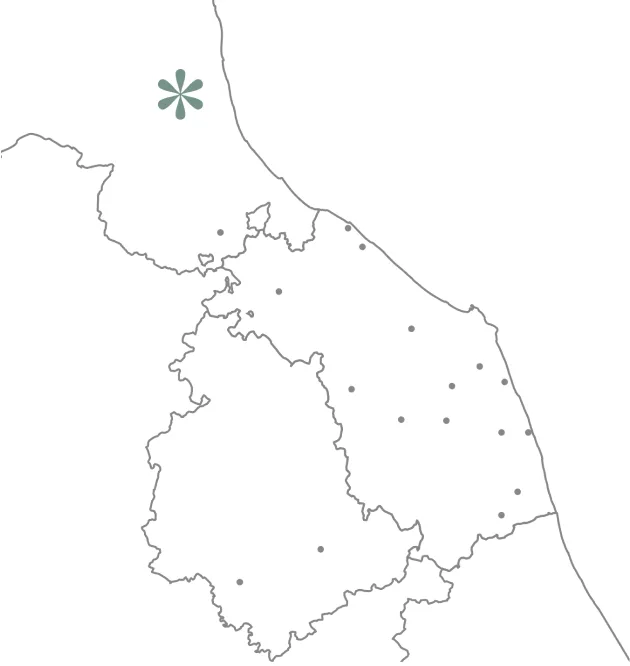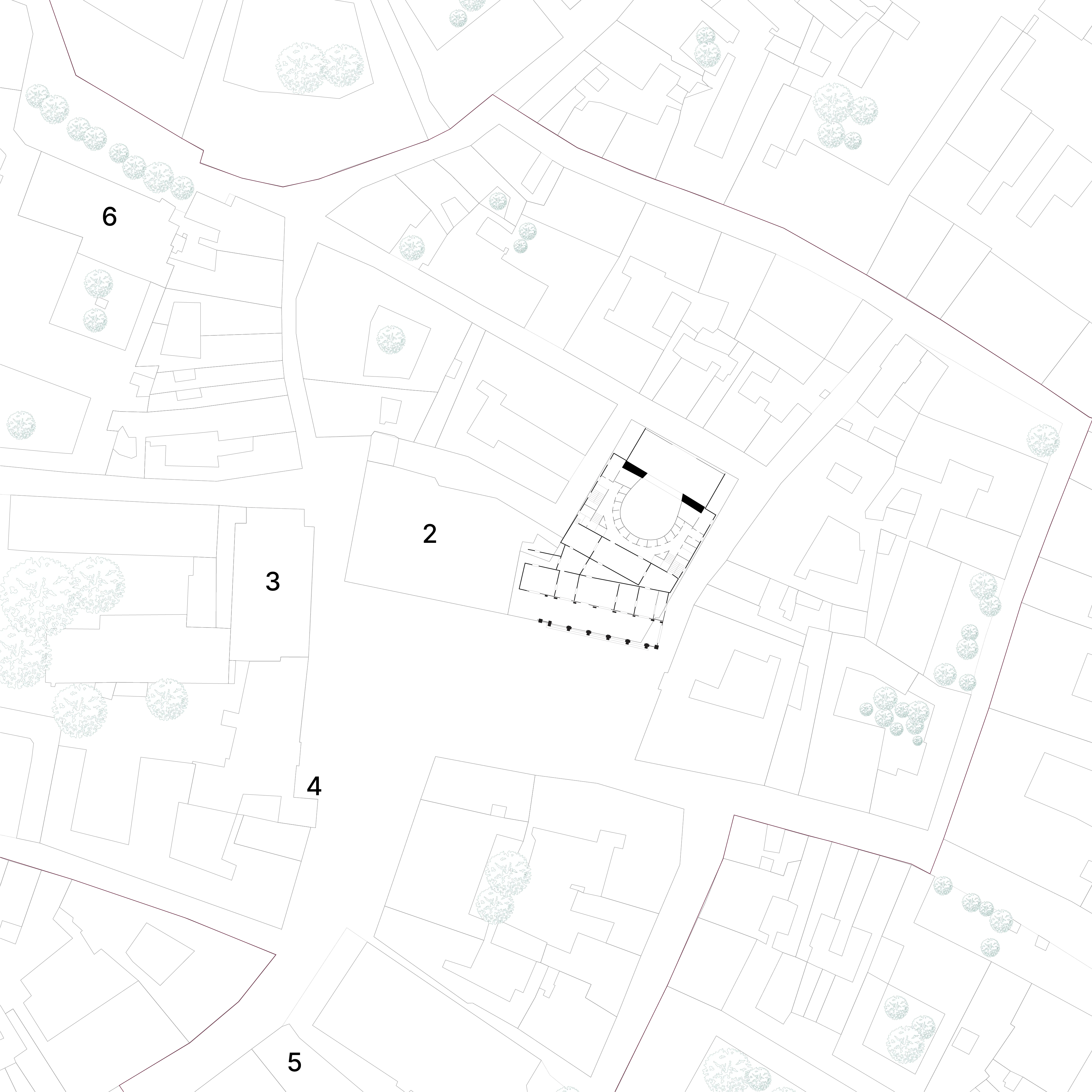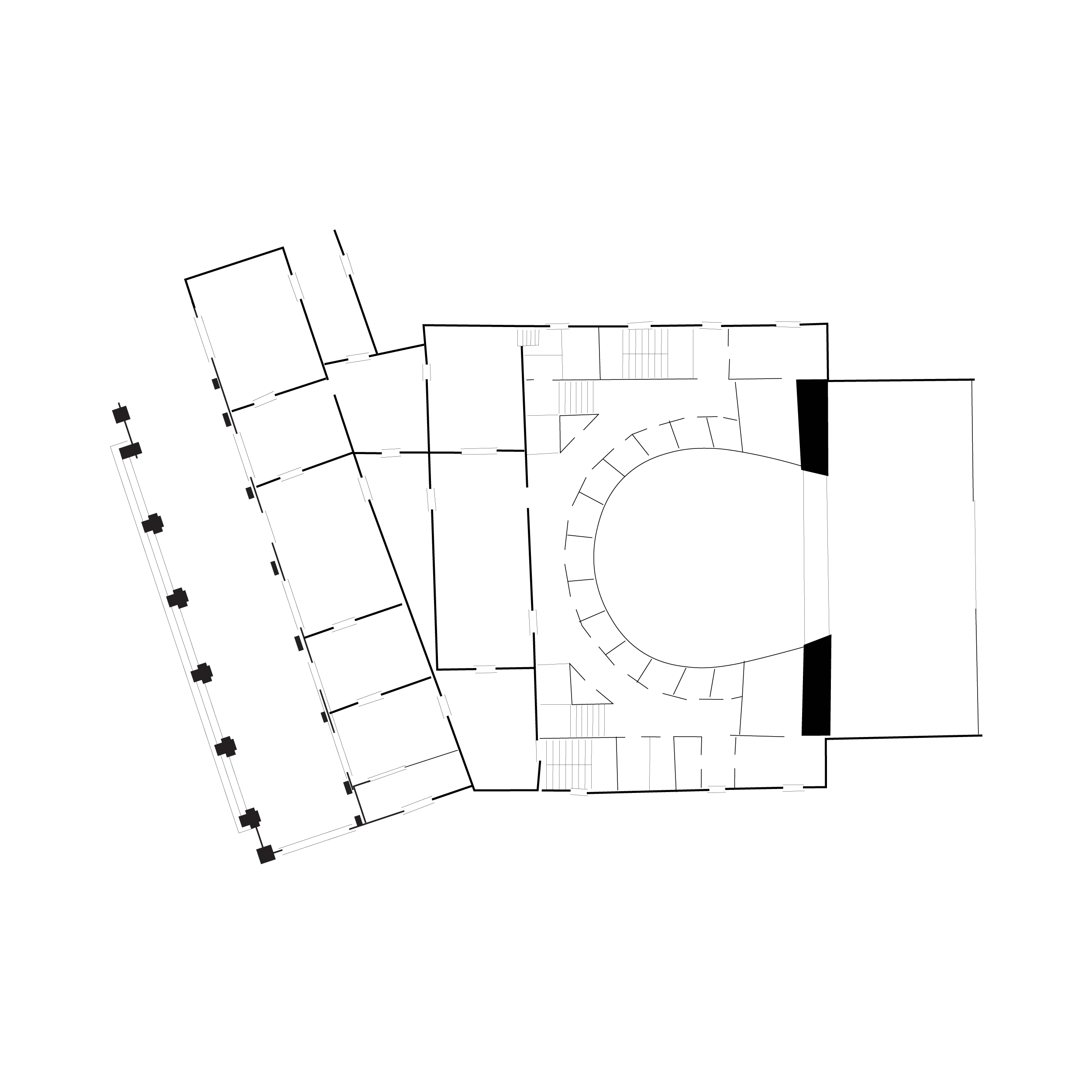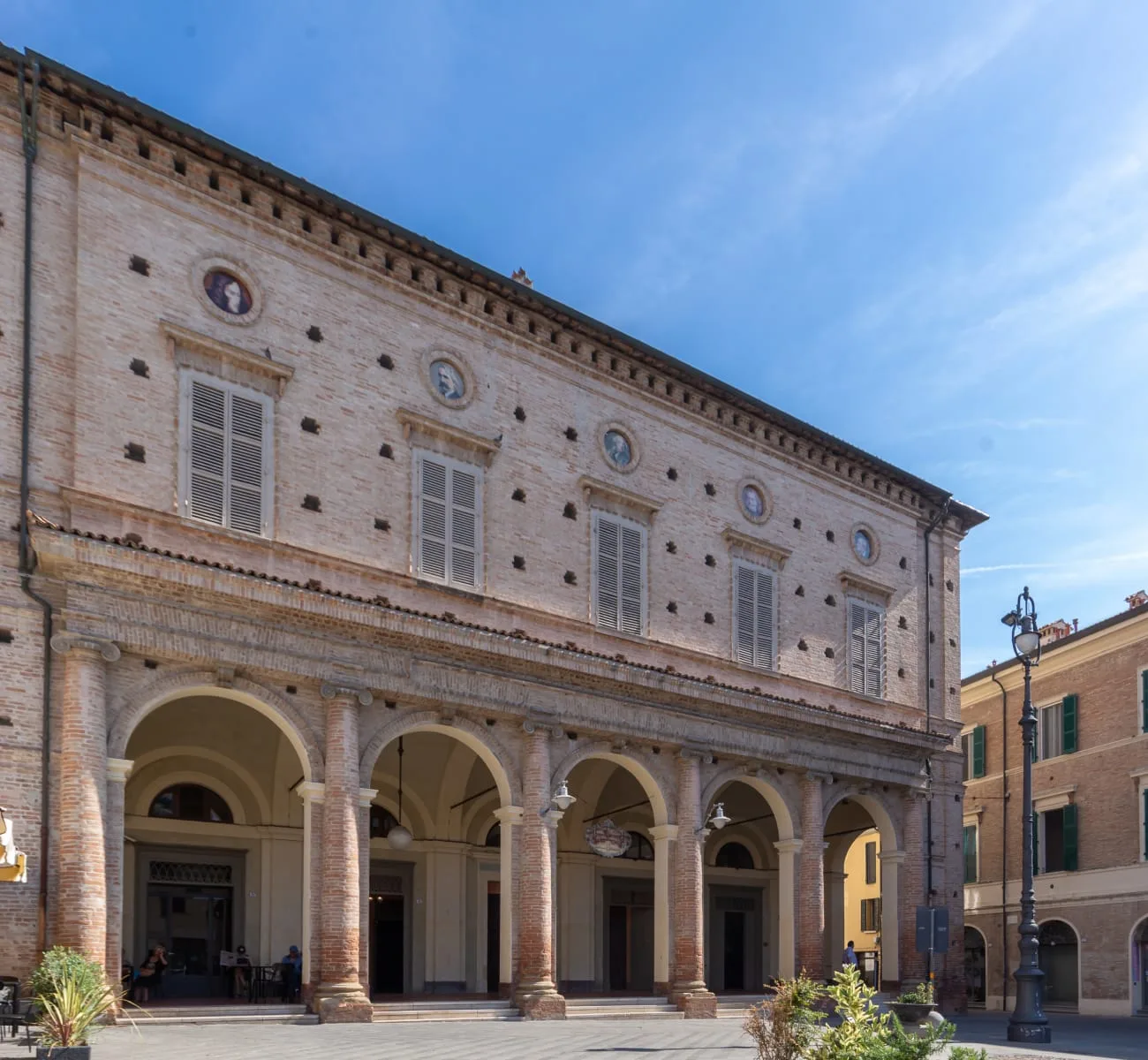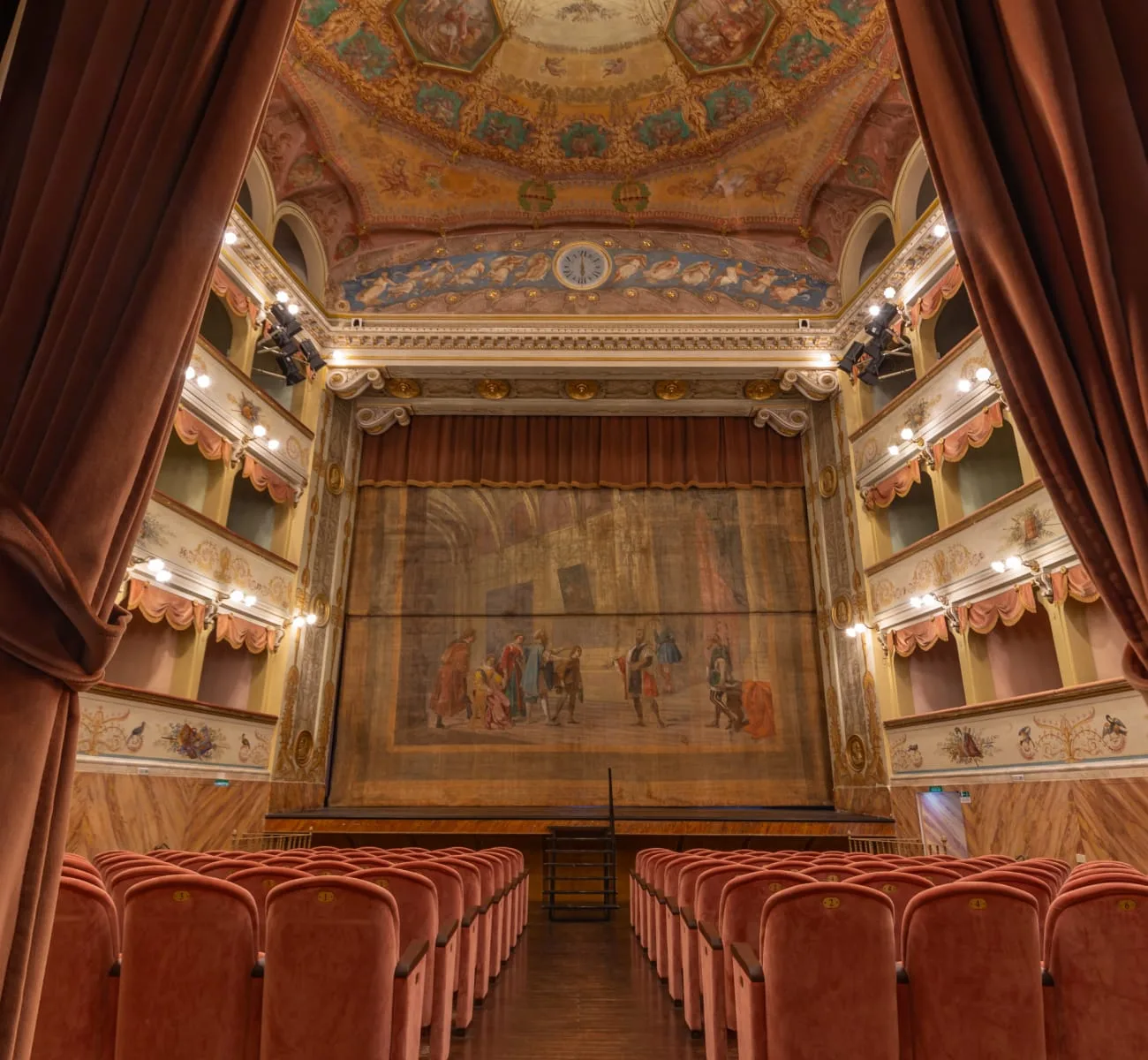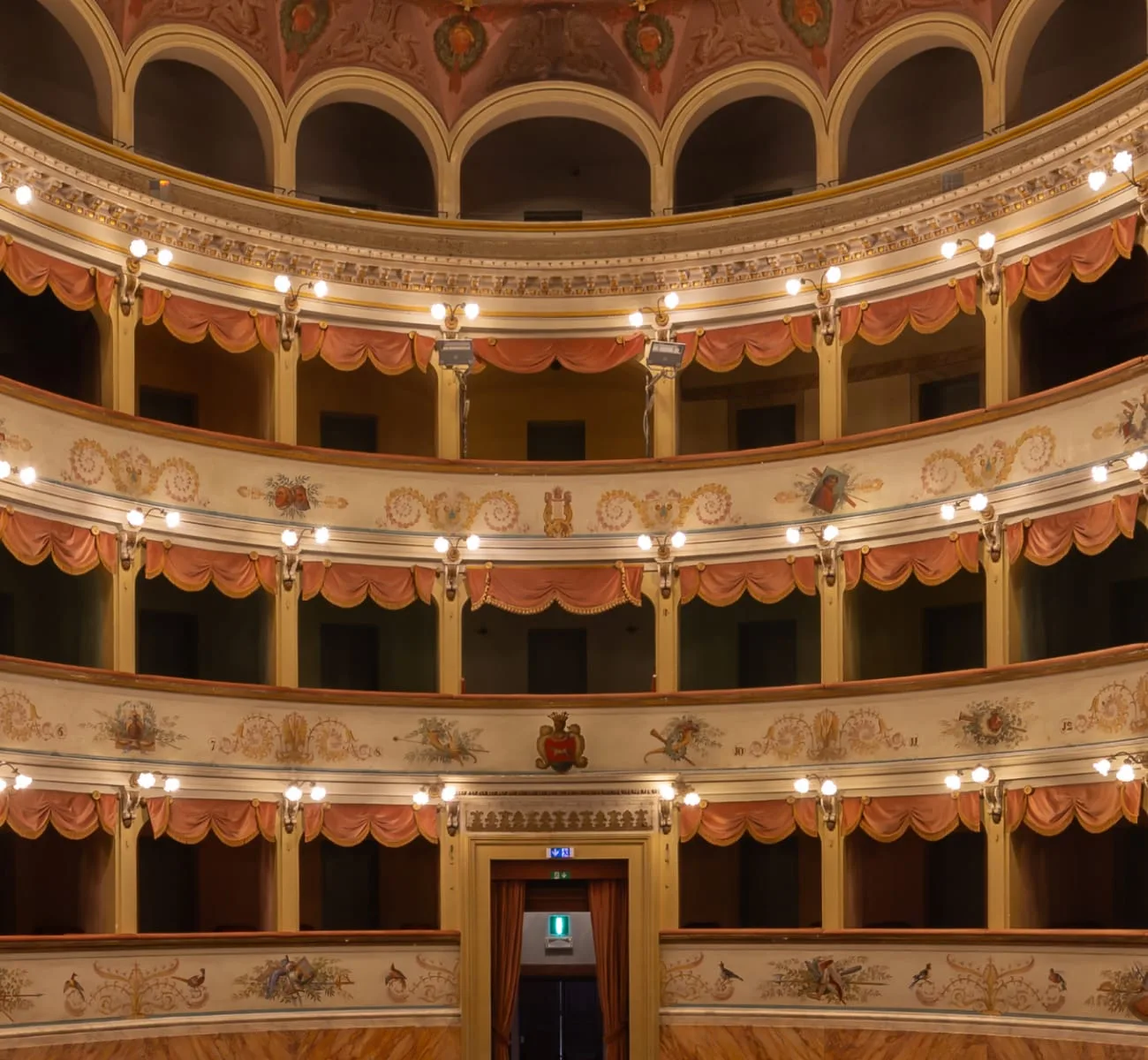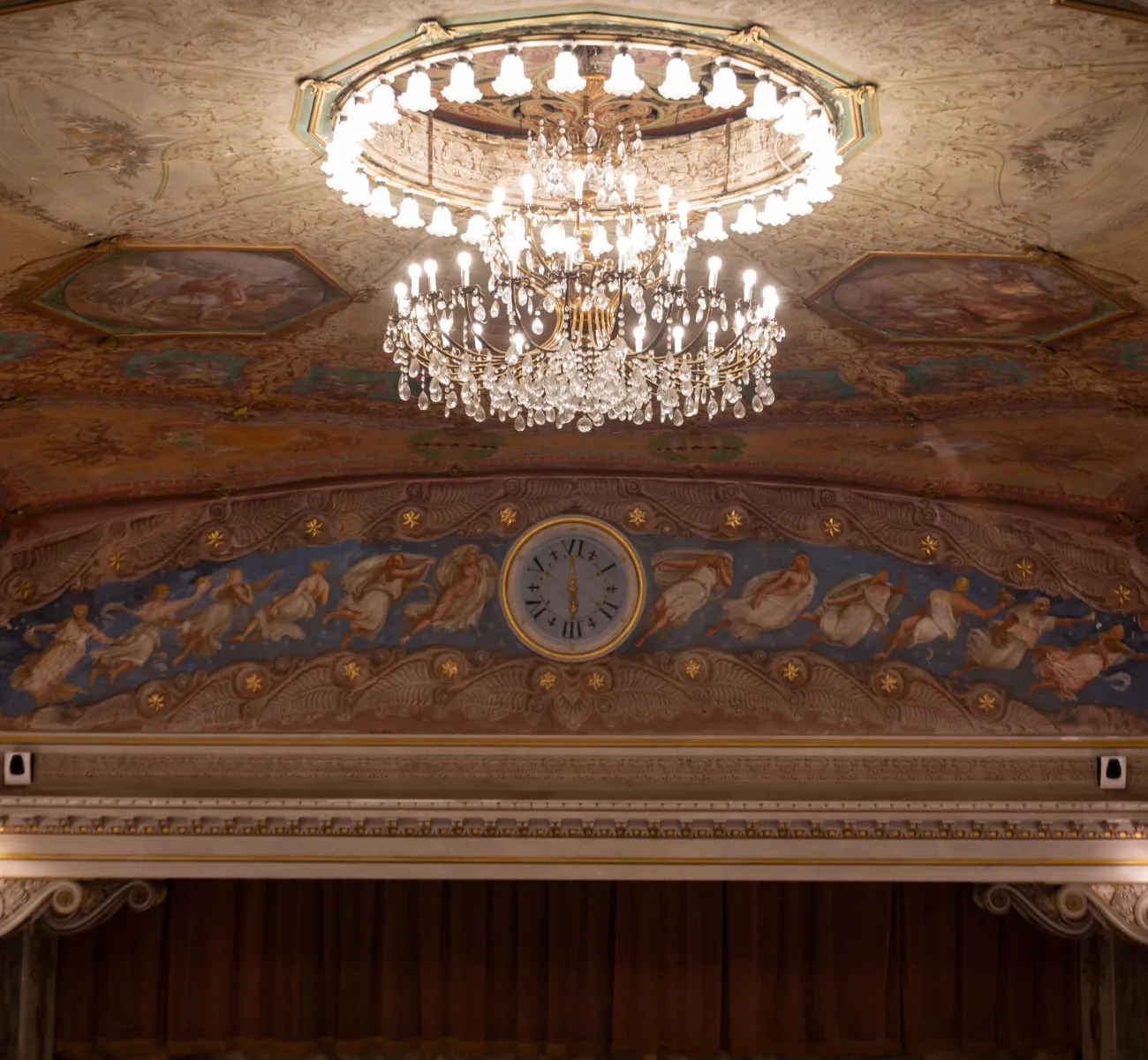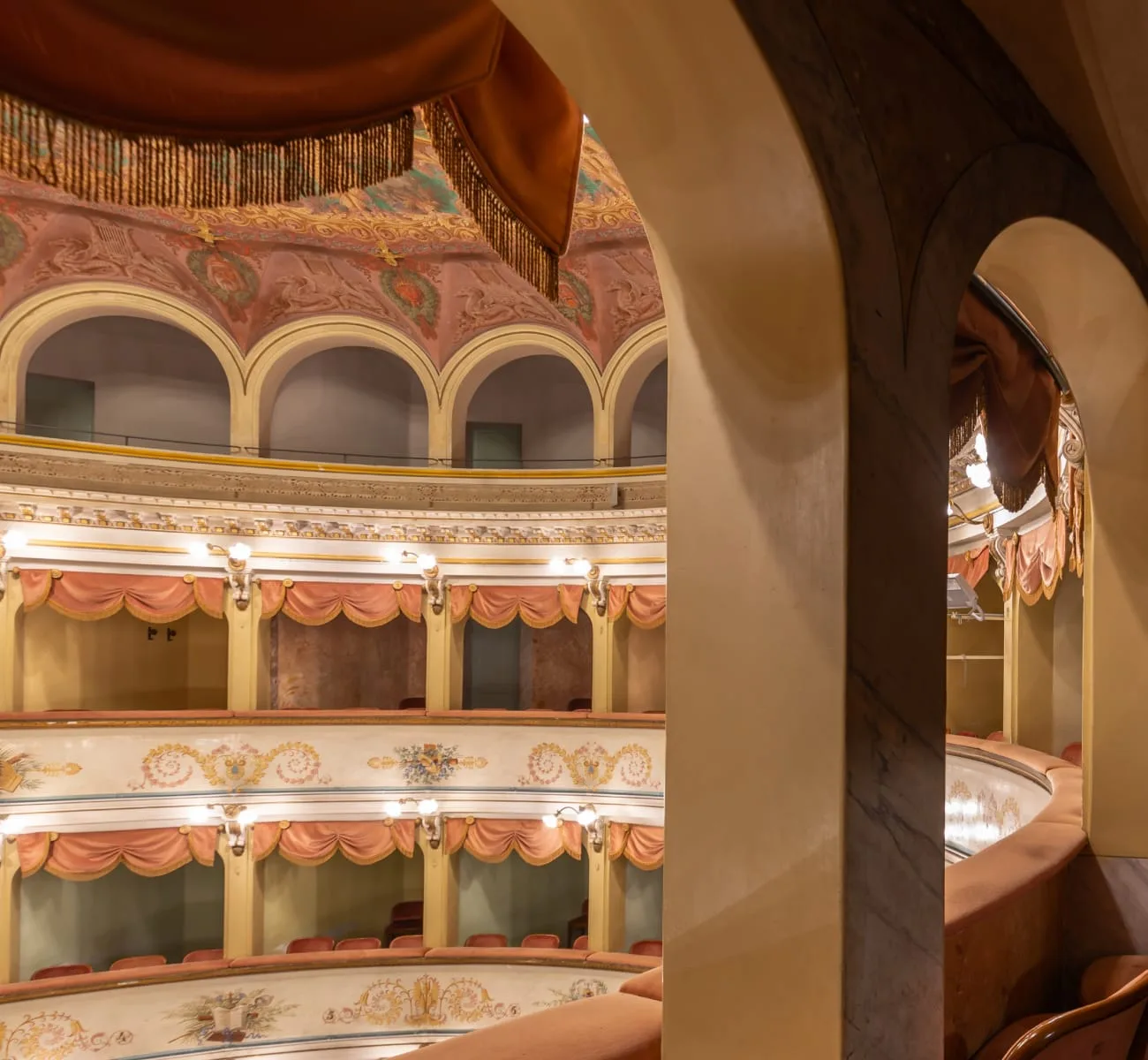In the Middle Ages, this was the market sqaure and stood at the entrance to the town along the ancient Strada Maestra. The Chiesa del Suffragio, the Civic Tower and Palazzo Vecchio line square. The Teatro Carlo Goldoni in Bagnacavallo preserves the house curtain painted in tempera by the Bologna artits Antonio Muzzi. The curtain shows a scene in whic the Renaissance painter Bartolomeo Ramenghi from Bagnacavallo receives the Bolognese senator Camillo Gozzadini. Other characters are Countess Aldrovandi, Gozzadini’s wife, and Primaticcio, a former student of Ramenghi, who became famous in France. The decorations in the scene are based on real life and the characters are dressed in 16th-century clothing.
The theatre’s rigging system is both operated manually by ropes and is motorised. Many of the historic stage machines have been preserverd. These include the cavalry machine, a thunder machine, a rain machine, and a gunfire machine used to create special effects during performances. These stage machines are no longer in use. Also preserved are scenary wagond used for moving sets from below the stage. The Municipal Archives contain several playbills announcing “Questa sera si rappresenta” (On Stage Tonight).
The Municipality of Bagnacavallo manages the theatre and outsources the artistic direction and the organisation of the various seasons. The theatre calendar includes a drama season, children’s theatre, contemporary theatre, theatre for schools, classical music, and theatre in dialect. The theatre also hosts cultural and charity events organised in collaboration with local volunteer groups. The theatre can be visited as part of guided tours organised by the municipal councip at certain times of the year or for groups.
